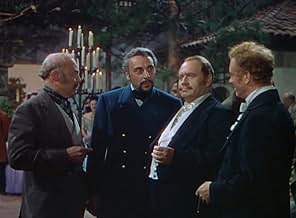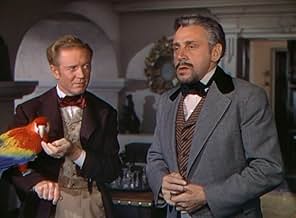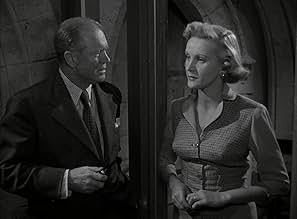Gavin Muir(1900-1972)
- Actor
Hailing from Chicago (his birth has also been noted as late as 1907
which to the purpose would be too late), Gavin Muir had that sort of
lean and hungry John Carradine face and
slight build that begged for character villain parts. Indeed he was bit
by the acting bug and started in regional theater but jumped to
Broadway by 1920, though his first role noted was "Enter Madame" in
1922. This play was also the debut Broadway performance for another
young actor destined for Hollywood -- but a sadly short career --
Ross Alexander. By 1923 Muir's
abilities beckoned further demands, and he produced and performed in
the comedy "Love Set". In fact the majority of his plays were comedy
rather than drama. And with twenty-one plays to his credit (until 1939)
and making the round of famous New York houses, the St. James and the
Lyceum, for example, Muir worked with some Broadway's greatest leads
and some later fellow film actors, such as,
Harry Davenport,
Robert Warwick, and
Henry Hull. Although he had one film for an
uncredited part in 1932, he was a fixture of the Broadway theater
season until 1933. Although Muir still had a few more Broadway plays to
do, he was finding his niche in Hollywood. The next year he was in the
film adaptation of the play
Mary of Scotland (1936) directed
by John Ford. Along with an assemblage of some of the best character
actors of Hollywood, Muir joined a rogues' gallery of self-seeking
Scottish lords who included:
Robert Barrat,
William Stack, and
Ian Keith trying to discredit the
young queen. Muir was busy thereafter through the war years of the
1940s his acting, and especially his various British accents (he was
sometimes mistaken as a British actor) but others were in demand as
military officer, doctor, noble, dignitary - and, of course, villains.
Into the 1950s he even endured Abbott and Costello in their continued
pop success,
Bud Abbott and Lou Costello Meet the Invisible Man (1951),
one of five such formula 'Meet' films. The film parts continued to get
leaner, so he ventured into TV, doing playhouse theater and also some
series. He was a regular-the butler Hollister - on The Betty Hutton
Show (1959) and did not retire until later 1965 after over seventy
screen appearances.

























